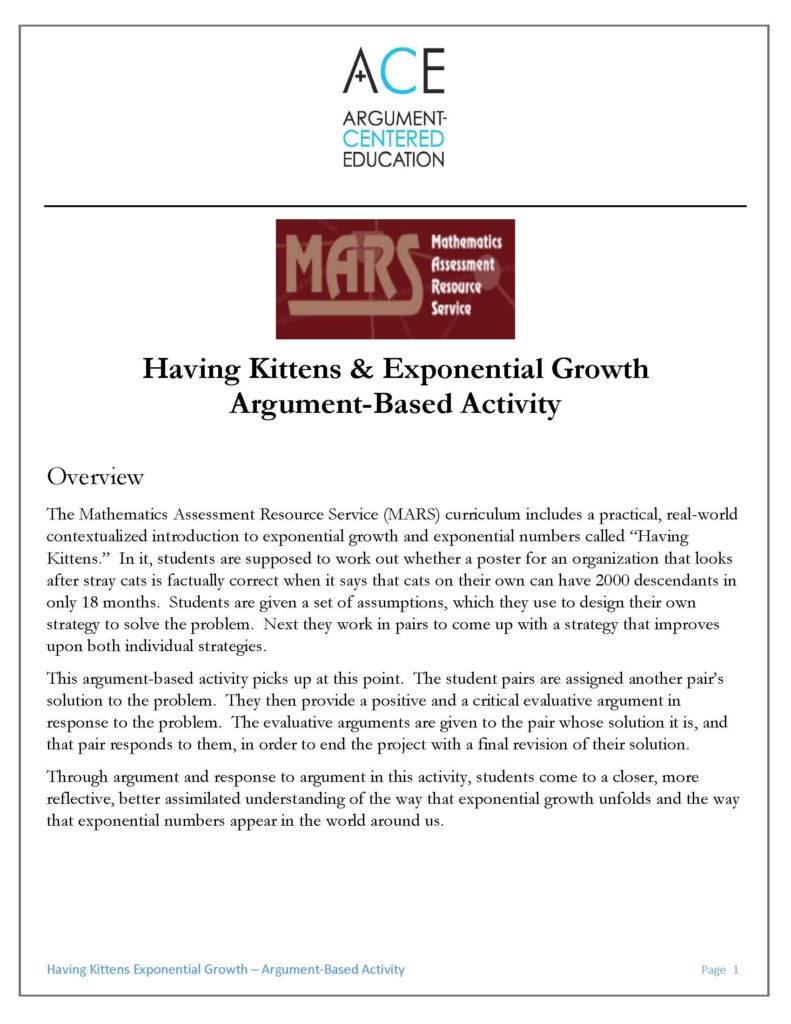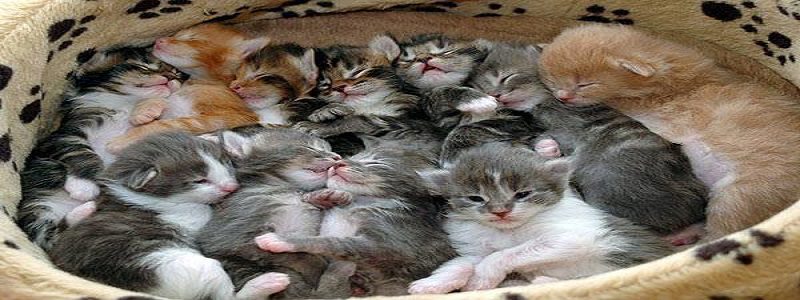
Having Kittens, Exponential Growth, and Evaluative Arguments
Argument-Centered Education works to argumentalize curriculum that teachers and schools are committed to teaching and using. We approach our work this way because on the basis of two fundamental convictions.
Capacity and expertise transfer is best done from the inside, not the outside
We aim to build teachers’ and schools’ permanent capacity to organize their own instruction around critical thinking and argument. Curriculum that gets imported into schools is often unused after an initiative is offer. And even if it continues to be used, it can be compartmentlized as the “critical thinking resource” or the “argument project.” Working with teachers’ own curriculum illustrates in the most resonant way for teachers who argument can be integrated throughout their practice.
Educators’ intellectual autonomy is crucial
Our work attempts to build (and in some cases re-build) educators’ intellectual interest and enthusiasm for their subject areas and their work. Argumentalization results in a classroom driven by inquiry on intellectual questions that reflect the curiosity and passion of the teacher, as well as the students. External curriculum can dampen educators’ enthusiasms, rather than cultivating them.
This is an example of an argumentalized project that we have worked on with partner schools’ math departments. It builds an argument component into a Mathematics Assessment Resource Service (MARS) project.
Overview
The Mathematics Assessment Resource Service (MARS) curriculum includes a practical, real-world contextualized introduction to exponential growth and exponential numbers called “Having Kittens.” In it, students are supposed to work out whether a poster for an organization that looks after stray cats is factually correct when it says that cats on their own can have 2000 descendants in only 18 months. Students are given a set of assumptions, which they use to design their own strategy to solve the problem. Next they work in pairs to come up with a strategy that improves upon both individual strategies.
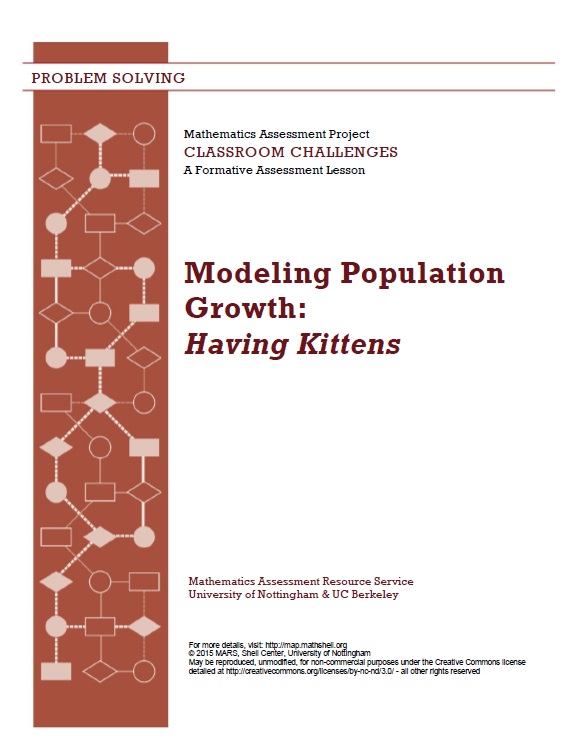
This argument-based activity picks up at this point. The student pairs are assigned another pair’s solution to the problem. They then provide a positive and a critical evaluative argument in response to the problem. The evaluative arguments are given to the pair whose solution it is, and that pair responds to them, in order to end the project with a final revision of their solution.
Through argument and response to argument in this activity, students come to a closer, more reflective, better assimilated understanding of the way that exponential growth unfolds and the way that exponential numbers appear in the world around us.
Method and Procedure
This activity should be conducted after student pairs have completed their joint solutions to the “Having Kittens” problem involving exponential growth.
(1)
Assign each student pair a number.
(2)
Distribute a packet to each pair made up of:
- Two copies of the Evaluation & Response Form
- Alice solution & Wayne solution
- Evaluation & Response Form Model
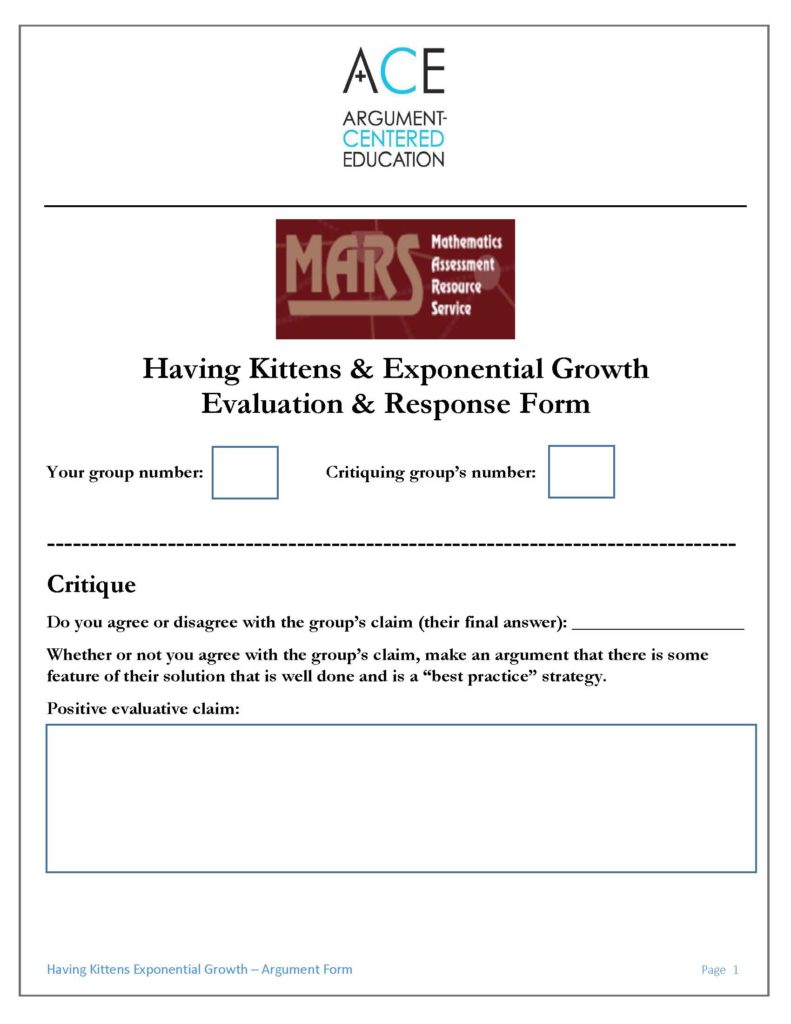
Click here to download the Having Kittens Evaluation & Response Form.
(3)
Provide a brief overview of the activity.
(4)
Using a projector or smart board, review the Alice solution and the Evaluation & Response Form Model that is produced on the Alice solution. Illustrate the application of the claim, evidence, reasoning model in this context, and identify the essence of each argumentative part, in this context. The claim should isolate a single attribute of the solution that is worth highlighting for its effectiveness and value, or its omission, incorrectness, or illogic. The evidence should point to relevant facts in an aspect of the solution. Reasoning should connect the evidence to the claim, and should articulate its significance.
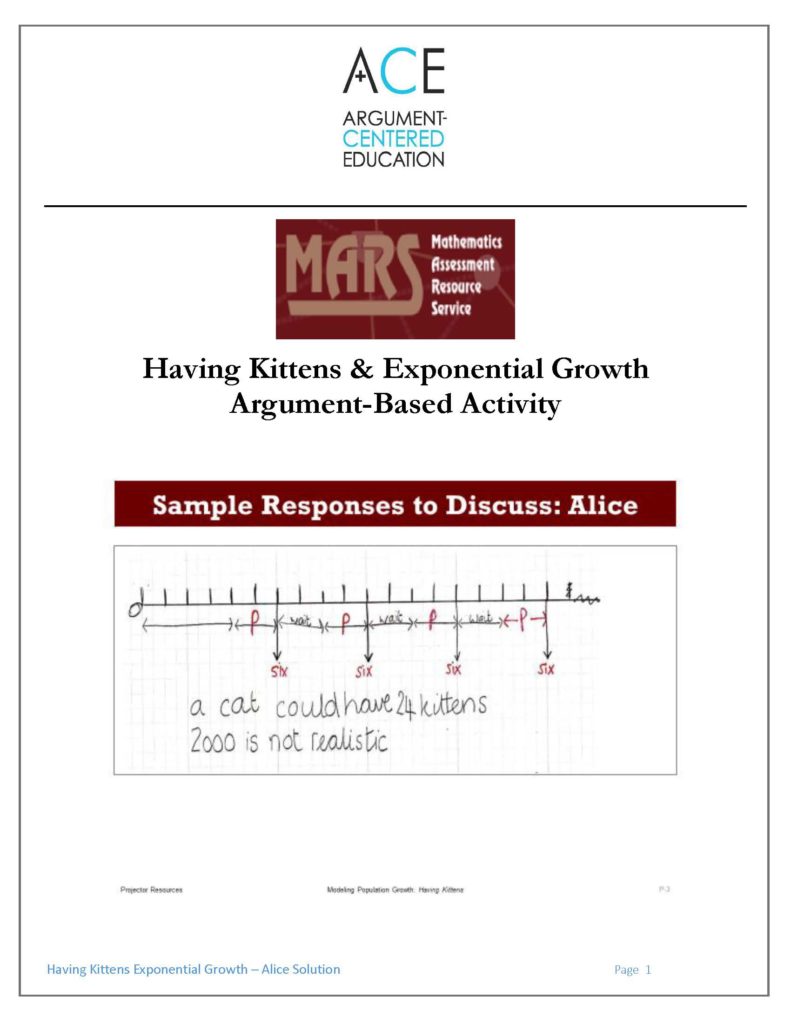
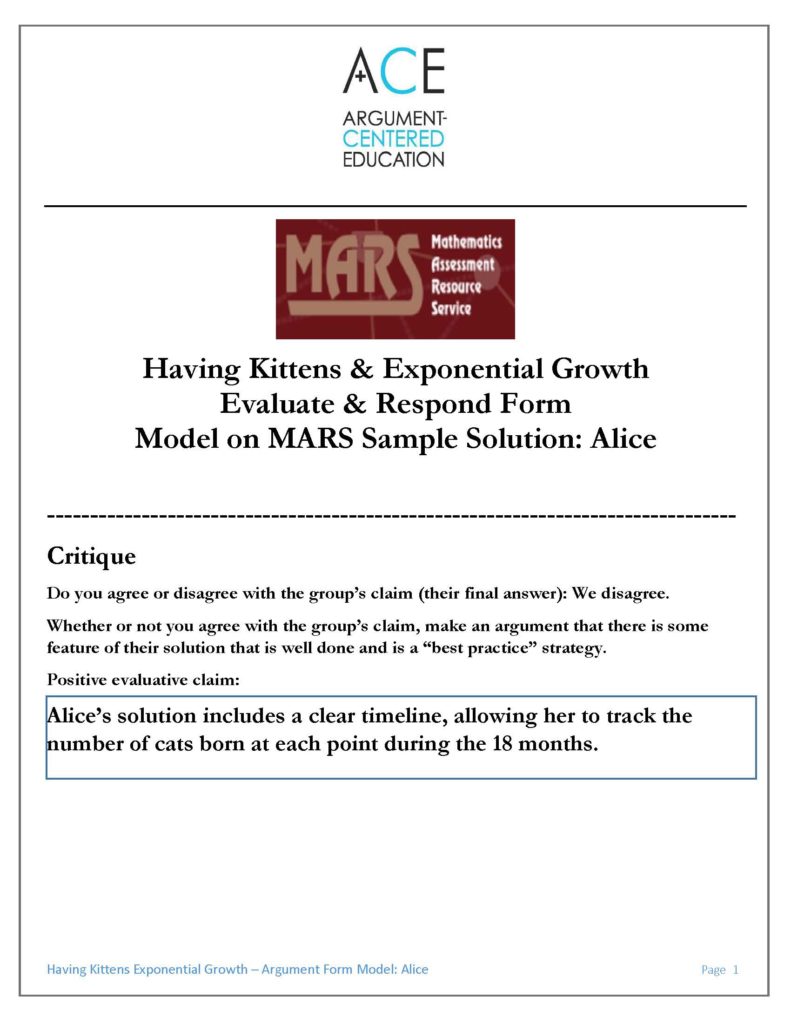
(5)
Have the pairs practice their evaluative arguments on the Wayne solution. Have pairs share out their evaluative arguments and discuss the proficiencies and deficiencies of each. We do not recommend that you use the Ben solution at all in this project: it is difficult to follow graphically, knotty in its thinking, and does not have much value as a model.

(6)
Assign each pair another pair whose solution they will evaluate.
(7)
Monitor and support students as their develop and write out their evaluative arguments.
(8)
Have students give their evaluative arguments to their assigned pair. Each pair should then respond to the evaluative arguments on the Evaluation & Response Form.
(9)
Pairs should revise their solutions, consistent with their responses on the form. Lead a short discussion in which students reflect on the ways that the evaluative arguments they received helped them think more deeply about and better understand the exponential growth problem.
(10)
Collect the Evaluation & Response Forms and the revised solutions for final assessment.
